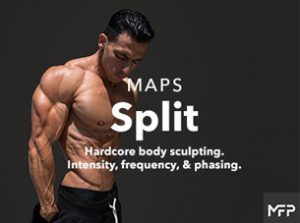The 15-Minute Workout Trend: Can Short Workouts Really Be Effective?
Mar 14, 2025 mindpumpAs we all start to realize the benefits of lifting weights, the paradigm is shifting. Within that realm, it is fair to also realize not everyone wants to spend an hour in the gym nor do they have time. The question then involves whether shorter workouts are really that effective? The answer is yes, so long as they are structured the right way.
The Science Behind Short Workouts
We live in a world where we think more is better. That if we aren’t working out for 60 minutes then we are leaving gains on the table. What research is showing is that shorter sessions can deliver similar results to longer workouts, especially when followed consistently. If you create the proper workout for a shorter length, you will notice a boost in strength and metabolic rate.
How to Structure a Highly Effective Short Workout
More is not better. Just because you have less time doesn’t mean you want to see how many exercises you can fit in 15 minutes. It is about maximizing time and effort. Here are the tips to keep in mind when structuring your short workout:
Focus on Compound Movements
Exercises like squats, deadlifts, presses, and rows work multiple muscles at once, making them perfect for short workouts. These movements deliver the most bang for your buck in terms of strength and muscle growth.
Use Progressive Overload
Short does not mean easy. You want to gradually increase the weight or reps over time. That could be doing 5 more pounds or 1 more rep. Where people lack to see progress is when they try to use the same weight week after week and never push themselves. You want to use a weight that allows you to land in a given rep range with 1-2 reps left in the tank. For example, if you are doing a bench press for 6-10 reps you can use a weight that allows you to get to 10 reps and leave you feeling like you could only do 1-2 more reps. If you are able to do more, then it’s time to up the weight. If you only hit 6-9 reps, then stick with that weight till you get 10. Track your progress so you can ensure steady improvements over time.
Prioritize Frequency Over Duration
Instead of doing one longer session 2-3 times a week, you want to do 15 minute workouts almost daily. It’s taking that same or similar work and spreading it over shorter, more frequent sessions so you can more easily fit it into your schedule without burning out or skipping a workout.
Bonus: Utilize Supersets and High-Intensity Techniques
This is an extra tool you can add into your workouts on occasion. Pairing exercises in superset fashion with non-similar muscles (think pairing rows with a bench) allows you to get more work done in less time. The reason for choosing opposite muscle groups is this allows you to superset without overfatiguing either muscle. You can also try including a drop set on the final set to make sure you left nothing in the tank on that final set of that muscle group.
The key is to train smart. Focus on compound movements, progressively overload, utilize frequency, and stay consistent. Whether you’re a beginner looking to start small or an experienced lifter needing to save on time, shorter workouts can be a game-changer for building muscle, and enhancing overall health.







